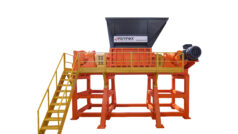The study would be completed in the coming two years. After completion, DSNY and BIC will work with stakeholders including businesses, the private carting industry and environmental justice advocates to develop an implementation plan for commercial waste reform in New York City.
The plan will lay out a framework to set up commercial waste collection zones that will improve customer service standards, achieve the city’s environmental goals, set clear standards for worker safety and allow new investments in recycling infrastructure and cleaner trucks.
“The magnitude of the improvements in air quality and reduction in truck traffic, coupled with the projected stable pricing for businesses, the study found, are compelling reasons for implementation of commercial waste collection zones,” said the city’s Sanitation Commissioner Kathryn Garcia.
“This study is the first step toward developing a more efficient and effective commercial waste collection system in New York City for businesses, employees and the public at large. We are excited to work with City Council and industry partners to develop a comprehensive plan to achieve these environmental benefits while also improving safety standards for workers and achieving our zero waste goals,” said Ms. Garcia.
“The trade waste industry has made great strides in the last 20 years since the Business Integrity Commission was formed. However, the results of the study released today are compelling. It is clear that we should move ahead in our examination of how a zone collection model for commercial waste removal in the City could help reduce truck traffic and vehicle emissions, achieve greater recycling rates, especially for organic materials and create greater uniformity in the trade waste industry as a whole,” added Ms. Garcia.
The study was conducted by a team of consultants that included BuroHappold, Sam Schwarz Engineering, Appleseed and Paul Carpenter Associates.
The study said that the current open-market commercial waste system generates excess truck traffic. The current system is also highly concentrated among a few carters and has low transparency in pricing. It prevents private carting firms from achieving efficiencies that allow investments in recycling initiatives or cleaner trucks.
The study finds that today commercial waste trucks travel over 23 million miles annually to collect refuse and recyclables from over 108,000 businesses.
A commercial waste collection zone system would divide the city into several geographic zones and assign private carters to serve businesses within each zone through a competitive bidding process.
A source said that the initial plan is to create about 20 commercial zones in the five boroughs of the city.
Other findings of the report are the following:
- Nearly 90 private carters serve about 108,000 customers in the city.
- The market is highly concentrated with the five largest carters serving 46 percent of all customers and collect 55 percent of all revenue, and the 20 largest carters serve 81 percent of customers and collect 84 percent of all revenue.
- Private carters are geographically dispersed, 38 percent of carters with fewer than 1,000 customers operate in three or more boroughs.
- Half of the carters reported an operating loss in 2013.
- There is little transparency on how rates are established, but commercial customers pay on average about 30 percent less than the rate cap set by BIC.
- Large customers pay on average 38 percent less than small businesses.
- With the exception of Staten Island, there is little connection between geography and rates paid by customers.
The study includes case studies from three Seattle, San Jose, and Los Angeles that have moved to implement commercial waste zones.
In response to the release of the study, the National Waste & Recycling Association (NWRA) released a statement. While appreciating the city’s efforts toward a forward-thinking approach to handling waste and recyclables, the association expressed concerns over the impact it would have on the waste and recycling industry in New York City.
The National Waste & Recycling Association (NWRA), in response to the release of the study, appreciated the city’s efforts toward a forward-thinking approach to handling waste and recyclables. However, the NWRA expressed concerns over the effect it would have on the waste and recycling industry in New York City.
“The member companies of our New York City Chapter are dedicated to – and deliver every day – a vital service based on providing high quality, efficient service in an open and competitive market that benefits city businesses and industry. No organization matches the track record of our members in helping communities nationwide in implementing and delivering on environmental management goals and objectives,” said Ms. Garcia.
“Our experience nationwide shows that proposals such as these unfairly limit competition, and limited competition can lead to negative consequences. That is why the city of Chicago rejected such proposals in order to maintain an open, competitive marketplace that best serves the community, its residents and its businesses,” said Ms. Garcia.
“Shifting to a district-based system of commercial waste services would constitute a major change with a multitude of impacts – both known and unknown; the next phase of discussions must give due consideration to alternate paths to achieve mutual goals, as well as carefully assess the trade-offs between various options,” NWRA’s New York City Chapter said in a statement.
“New York City is well-served by a robust and competitive marketplace that already is substantially consolidated and efficient, with customer choice the keystone of that system. We welcome the opportunity to review the city’s initial analysis, and work with the city and interested stakeholders to consider options for further improving the performance of the city’s waste and recycling sector,” NWRA’s New York City Chapter manager Kendall Christiansen said.









